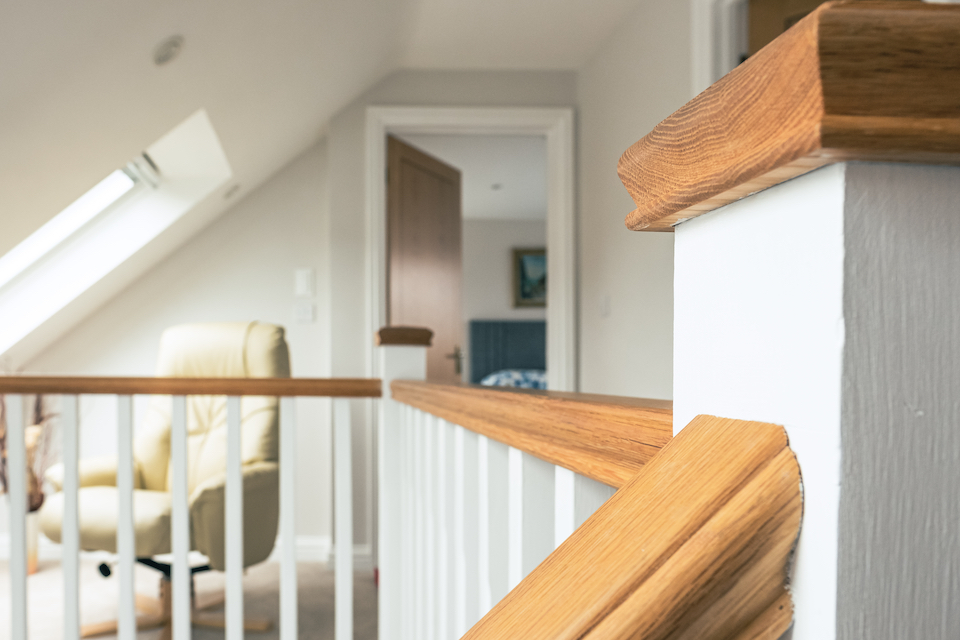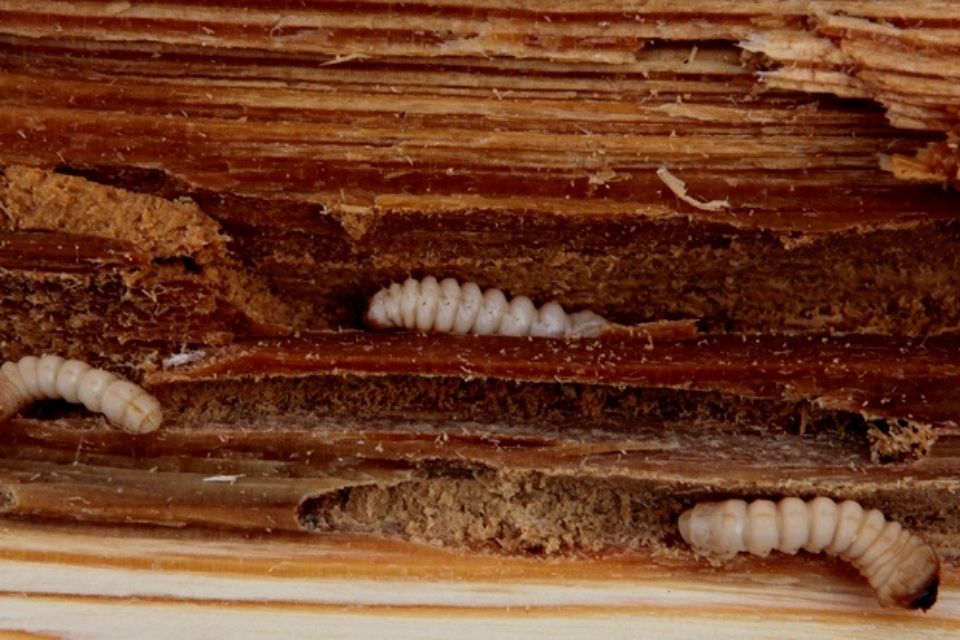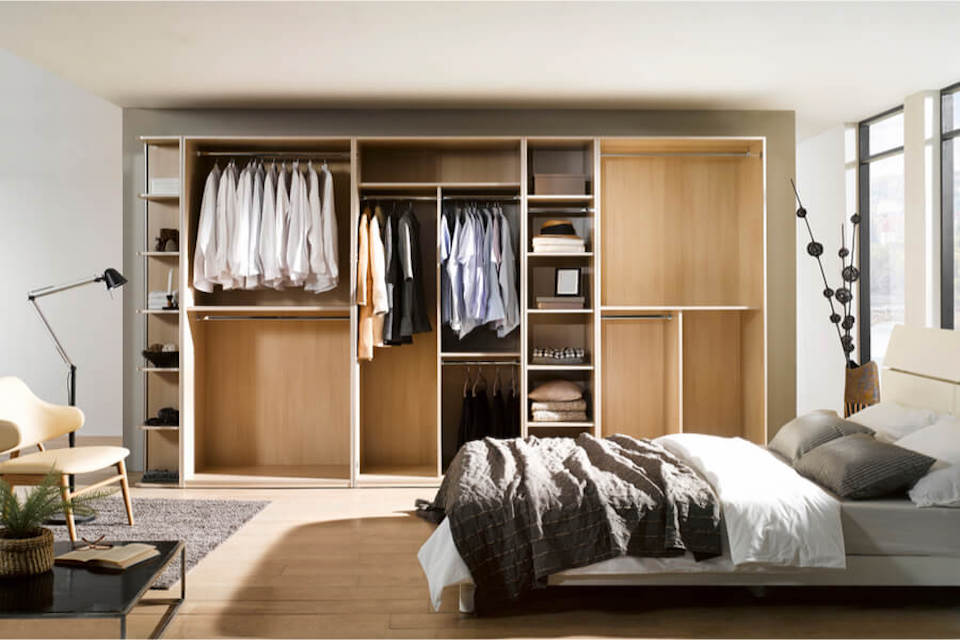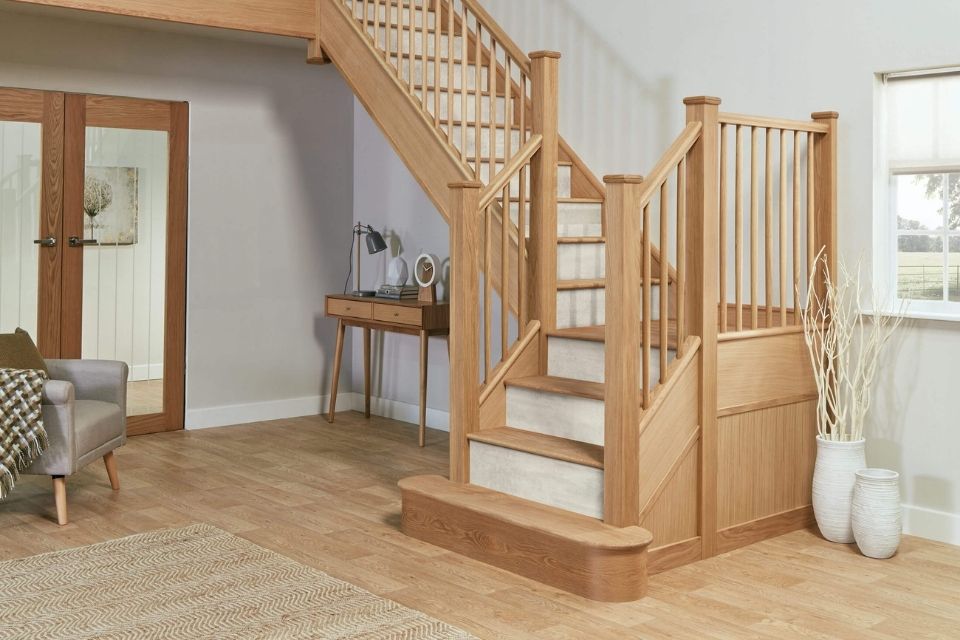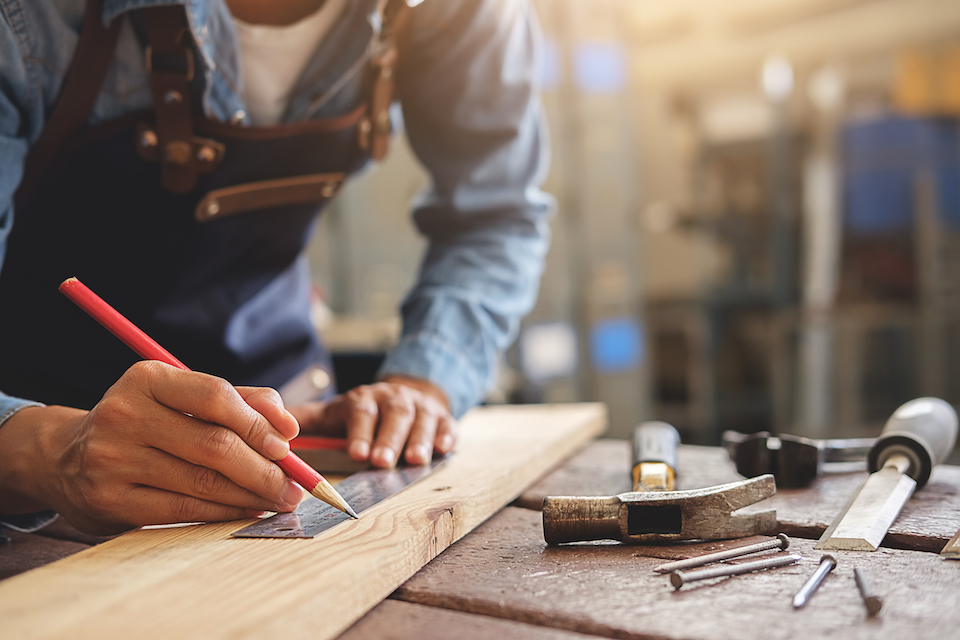How Much Does It Cost to Replace a Staircase Bannister?
Replacement bannisters can improve your staircase by making it safer or simply improving how it looks.
You may need to replace your bannister for various reasons, such as:
- Underlying damp issues.
- The existing bannister is in poor condition.
- Creating a new aesthetic in your home.
The cost of a new bannister is separate from the cost of a new staircase, if you decide to have one of those fitted at the same time.
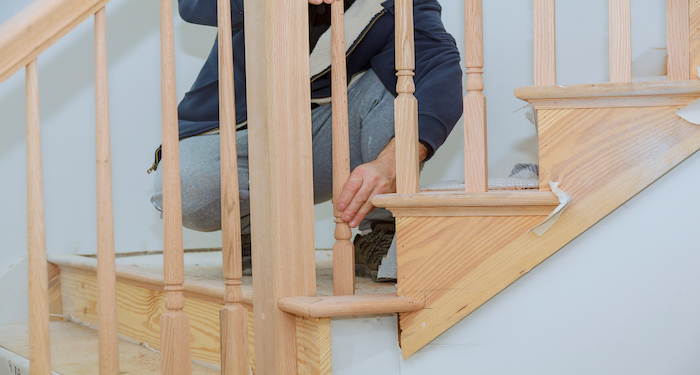
So, how much does a new bannister cost?
On average, a new staircase bannister could cost up to £5,000 for a high-end, complex design. However, a mid-range design is likely to cost between £600 and £1,600, including materials and installation.
Building Regulations cover bannisters, so this is rarely suitable as a DIY job unless you know exactly what you're doing.
The total cost is determined by factors including:
- Currently available bannister material
- Material for new bannisters
- The bannister type (straight, spiral, etc.)
- The length and width of the bannister
Each of these factors determines how long it will take to finish the project as well as its overall scope.
If you don't need to replace your bannister entirely, it might benefit from a fresh coat of paint or refinishing. This is usually a less expensive way to update your staircase without spending a fortune.
Bannister Prices
The table below will break down the costs to replace a bannister:
| Replacement Type | Bannister Replacement Prices |
|---|---|
| Basic | £200 - £600 |
| Mid-Range | £600 - £1,600 |
| High quality | £1,600 - £4,500+ |
| New bannister and spindle | £50 - £200 per metre |
| Refinish bannister | £5 - £10 per metre |
- How Much Does It Cost to Replace a Staircase Bannister?
- What are the Supply Costs for a Replacement Bannister?
- What are the Additional Costs of Replacing a Bannister?
- What Affects the Cost of a New Bannister?
- Tradesman Costs for a Bannister Replacement
- How Long Does It Take to Replace a Bannister?
- Types of Bannisters
- How Much Does It Cost to Remove a Bannister?
- FAQs
What are the Supply Costs for a Replacement Bannister?
Replacing a stair bannister is a do-it-yourself project once you understand each component, its function, and how they all collaborate.
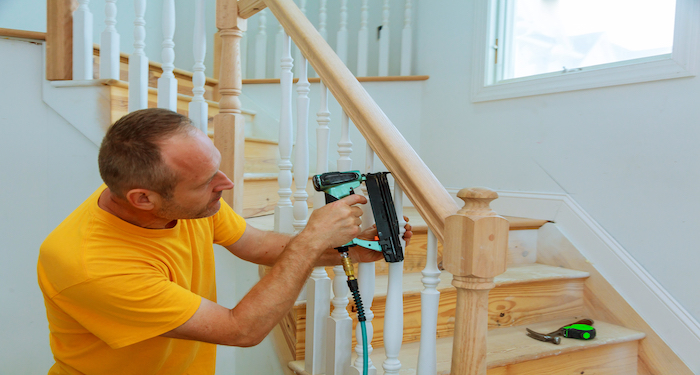
If your bannister is damaged or worn, or if you simply want a new look, replacing it is your best option. We'll go over the various supply costs for a replacement bannister here, so you know exactly what to expect when you come to your DIY project.
First, you will need to buy a new bannister depending on the type. Updating your current bannister from wood to wrought iron or vice versa can give your home a dramatic new look.
Examine your options and choose something that complements the character of your home and your preference. This can vary from £50 - £400!
You may also need a tape measure to measure the size that you will need. Measure the length of your existing bannister to get an idea of how long your new bannister should be. You might need to cut the bannister to size, so buy more than you need. This will cost you £2 - £6.
You will then have to buy newel posts that cost £35 - £60, depending on the amount and type you want. Rail bolts to screw this in will cost £1 - £10, and screws will cost £3 - £9.
You will have to have a drill to make holes in the walls. This will cost £15 - £40.
To make sure it is extra protected, use carpenter glue; these cost £2 - £9 and painter's tape should be wrapped around the tops of the spindles to keep glue from dripping on them.
This will cost £0.90 - £3. Handrail brackets are usually cheap, costing £1 - £5.
The table below will break down the supply costs to replace a bannister:
| Supply | Cost |
|---|---|
| A new bannister | £50 - £400 |
| A tape measure | £2 - £6 |
| Newel posts | £35 - £60 |
| Rail bolts | £1 - £10 |
| Screws | £3 - £9 |
| Drill | £15 - £40 |
| Carpenters glue | £2 - £9 |
| Painter’s tape | £.90 - £3 |
| Handrail brackets | £1 - £5 |
What are the Additional Costs of Replacing a Bannister?
When replacing a bannister in your home, you may decide to have additional costs or small factors influencing the overall cost. Here we will go over the different additional jobs and their costs.
Cost to Paint Interior Doors
Refreshing your internal doors can improve the aesthetic of rooms or landings alongside a new bannister.
The typical cost to paint an internal door is between £50 and £200, although the exact price will be determined by the quality of paint you use and whether there are labour costs involved.
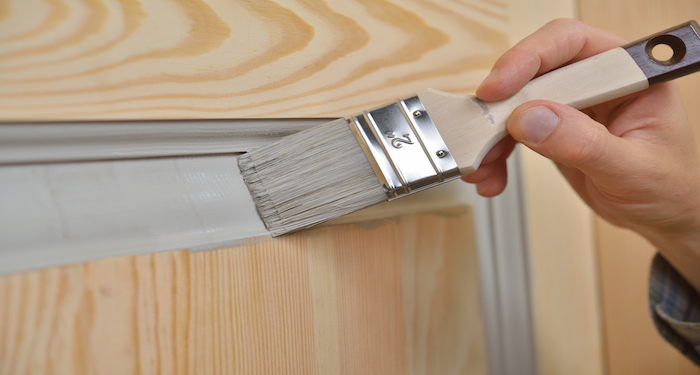
Painting and Decorating
Other painting and decorating jobs can be undertaken at the same time as installing a new staircase bannister, such as painting rooms, skirting boards or wallpapering. These can all improve the overall look and feel of your home on a modest budget.
Interior painting and decorating costs will vary depending on what type of improvement project you opt for.
Carpet Fitting
A new carpet can help to improve a room, with the cost to get a carpet fitted ranging from £6 to £60 per square metre, depending on the quality of the carpet.
Staircase carpet fitting can require more work, so prices may differ if you want to get a staircase carpeted to sit alongside a new bannister.
What Affects the Cost of a New Bannister?
Multiple factors will contribute to the price of a new bannister installation, including:
Skip Hire
The average price to hire a 2-yard skip will cost £60 to £120, a 4-yard skip will cost around £100 to £260, and then a 6-yard skip will cost around £110 - £238.
An 8-yard skip will cost between £150 and £375, and a 10-yard skip costs between £170 and £250.
The cost of hiring a skip will depend on the size and type of skip you will need. Roll-on roll-off skips are less expensive per yard than standard skips.
Other price factors will include the number of tradespeople hired to deliver and pick up the skip, the ease of accessibility to your property, and your location. Because skip hire cost varies across the country, where you live will influence the price of hiring a skip.
Please refer to our guide on skip hire costs for further information.
Size
Unsurprisingly, the bigger the bannister, the higher the cost of replacing a bannister. Of course, this is not always the case, but a larger staircase will frequently necessitate more materials and will take a little longer to maintain than a relatively small staircase.
This, however, is unlikely to be a substantial financial consideration.
Duration
The time taken to complete the job may or may not influence the overall cost, and it depends largely on how the tradesperson works.
In a few cases, a contractor will be paid a lump sum upfront, and in others, they will be paid by the hour.
Location
The cost of living in your area will influence the cost that individuals or businesses set, as will supply and demand levels in your area.

Another factor to consider is how quickly nearby providers can arrive at your property. Their gasoline costs will rise as their route lengthens, increasing your total payment.
Tradesman Costs for a Bannister Replacement
Installing a bannister correctly necessitates the necessary experience. In general, bannisters and spindles see a lot of use and are an important safety mechanism in the home. While the DIY path is always the most cost-effective option, you should avoid anything that could lead to an unstable staircase.
In some cases, if the project's scope is quite large, you might be required to obtain a building permit. Consider hiring a professional to ensure that the substitute is completed to code safely.
Here we will go through the different labour jobs so you know how much you should pay for a painter to come in and do the job for you!
Architect
When designing a bannister, building designs or drawings may be required. Often, the plans are created by a professional designer or architect to ensure that the right materials are used, the right style is used, and you get the desired results.

This is one of the smaller jobs involved, and it will account for a significant portion of the labour costs.
The average cost of hiring an architect or a specialist designer is about £50 - £100 per hour. They would, however, typically charge by the completed job rather than by the hour.
A finished design, drawing, and technical requirements would cost between £200 and £3,500.
Please refer to our guide on architects' fees for further information.
Carpenter
If you plan to create your bannister out of wood, you must hire these tradespeople. They will often be able to complete the job without the need for additional tradesmen, though this will vary based on the Carpenter chosen.
A carpenter's day rate is usually around £150 - £250. The tradesman's skills and experience will determine this.
Please refer to our guide on carpenters' fees for further information.
Builder
A general contractor is frequently hired to oversee the entire project. To complete the work, they can hire and manage subcontractors like carpenters and labourers.
Furthermore, when constructing a metal design, a general builder is frequently the best choice due to the excellent stability of their experience and the labour price that can be offered.
A general builder will typically cost between £150 and £250 per day to hire, depending on the amount of work required, the skills they acquire, and their level of experience.
Carpet Installer
It is common practice to lay new flooring on top of a new staircase after it has been installed. Typically, this will be carpet or laminate/hardwood flooring. It is generally better to hire a carpet fitter to install a carpet on a set of stairs.

The carpet fitter will measure the area where the new carpet will be installed, provide the sizing for the required additional carpet, and then, once purchased, lay the covering on the newly constructed bannister.
A carpet fitter will typically cost between £100 and £150 per day, including experience and skill level.
Labour
The cheapest type of tradesman, a labourer, must not be overlooked when estimating the cost of the job. A specialist will use their own individual labourer; however, you should be aware of the costs of hiring them.
A simple labourer’s day rate is usually between £60 and £100 per day. They are used for heavy lifting, material moving, and jobs that do not require a particular skill.
The table below will break down the different tradesmen's costs needed to replace a bannister.
| Job | Cost |
|---|---|
| Architect | £50 - £100 per hour |
| Carpenter | £150 - £250 per day |
| Builder | £150 - £250 per day |
| Carpet installer | £100 - £150 per day |
| Labour | £60 - £100 per day |
How Long Does It Take to Replace a Bannister?
There are various elements that affect how long it takes to replace a bannister, such as:
Painting
While trying to paint the bannister is not strictly necessary, it may be desirable for aesthetic reasons. If this is the case, you might decide to paint the bannister before assembling it to ensure that it is completely painted.
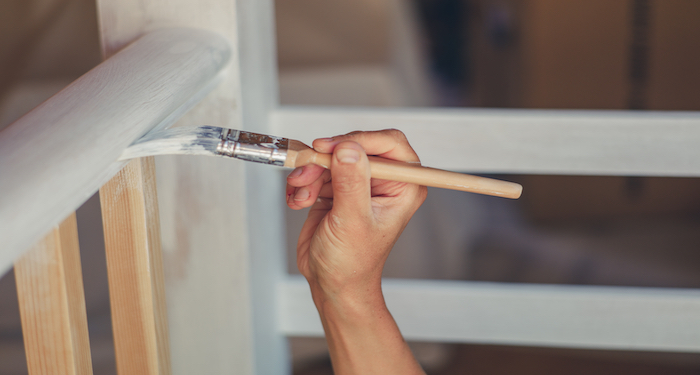
When deciding on a colour, keep your climate in mind. If you paint the bannister black or another dark colour and live in a hot climate, it will heat up and become extremely hot to touch and to use.
After you've decided on a colour, you'll need to decide whether you'll be painting it yourself. This will take 4 - 6 hours to complete because it must dry and have coated layers.
Size
Unsurprisingly, the bigger the bannister, the longer it will take. Of course, this is not always the case, but a more oversized staircase will frequently necessitate more materials and take a little longer to maintain than a relatively small staircase.
Complex
If your bannister is in an awkward shape or place, it will take longer to complete as the job will be a lot harder.
Most bannister installations will take two to three hours. However, if the job is more complicated or the staircase is larger and requires preparation, it could take a little longer, but it should not take more than a day.
Types of Bannisters
The bannister helps prevent falls and injuries and is one of a staircase's most important safety features. These staircase components can be made of various materials such as metal, wood, or glass to achieve different visual effects.
The appearance of the staircase will also be influenced by the type of bannister used. We will go over the various types of bannisters and their benefits and drawbacks to decide which one is best for you and would suit your home better.
Steel Bannister
Steel is popular for bannisters, commercial egress stairs, and industrial stairwells. Stair stringers should be made of steel. Galvanised steel or stainless steel is often used to prevent rusting.
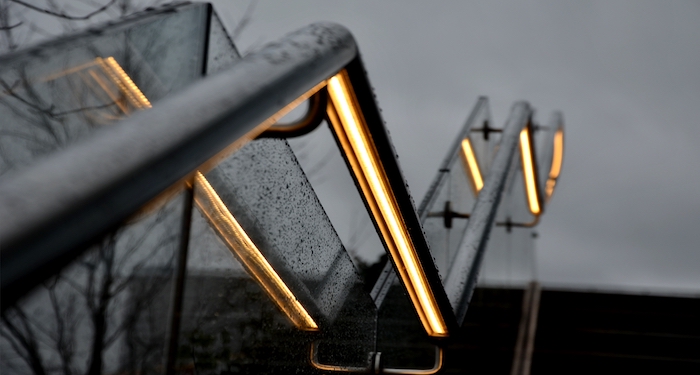
Galvanised steel is zinc-coated to prevent harmful materials from harming the steel beneath. To make stainless steel corrosion-resistant, chromium, nickel, nitrogen, and molybdenum are added.
Steel bannisters have been used in a variety of settings. A powder-coated or galvanised steel bannister is a popular option for prefabricated manufacturing stair applications where the other elements of the stairs are steel.
Stainless steel handrails in homes provide a sleek, modern appearance. Stainless steel bannisters can be combined with railings produced of other materials, such as glass, to create a contemporary look.
Steel bannisters can be used in various environments such as industrial, commercial, and residential. Steel railings are more functional when used in industrial settings.
Stainless steel provides clean lines and a modern appearance in homes and offices. They can be used in conjunction with various bannister materials, including wood, to achieve the desired effect.
Pros
- Extremely strong and durable
- It can be coated with powdered coatings
- Requires little maintenance
Cons
- It can weaken in extreme heat
- It can be more expensive
- Hard to install
Aluminium Bannister
Aluminium is a naturally occurring element with a lower density than other metals, making it lighter than steel. Aluminium has a silvery appearance and is highly reflective.
Without any additional treatment, aluminium is naturally resistant to rust and corrosion.
Aluminium bannisters can be found in a wide range of environments. You can use them both within and outside residences, commercial structures, and industrial settings.
Outside, aluminium stair railings are commonly used for entrance steps and decks. They can, however, be found indoors in whatever type of building or facility.
Pros
- Strong and durable
- Requires little maintenance
- Easy to install
Cons
- Expensive
- Candent and scratch
Wrought Iron Bannister
Wrought iron is an iron alloy with low carbon content. The demand for this malleable material, which was frequently used to reach a highly decorative effect, peaked in the mid-nineteenth century.
Wrought iron is no longer mass-produced today, but it is still used to restore and replicate historical work.
Today, most products that resemble and are described as wrought iron are created of mild steel with just a low carbon content.
Interior and exterior bannisters in commercial and residential buildings can benefit from wrought iron handrails. Straight or curved stairs can both benefit from wrought iron handrails.
You can find decorative wrought iron bannisters in private homes and office buildings. They are suitable for both interior and exterior use. Wrought iron balusters are frequently used in conjunction with wood handrails to achieve an advanced and dramatic effect.
Pros
- Strong
- It can be in different colours
Cons
- Heavy means it is not easy to install
- Can rust
- It needs to be recoated to prevent rust
Wood Bannister
The most traditional material for bannisters is wood. Popular woods include red oak, which is simple to stain, sand, and finish, and white oak, which is more complex and resistant to water. In addition, staircase bannisters can be made of mahogany, ash, cypress, cherry, and various other woods.
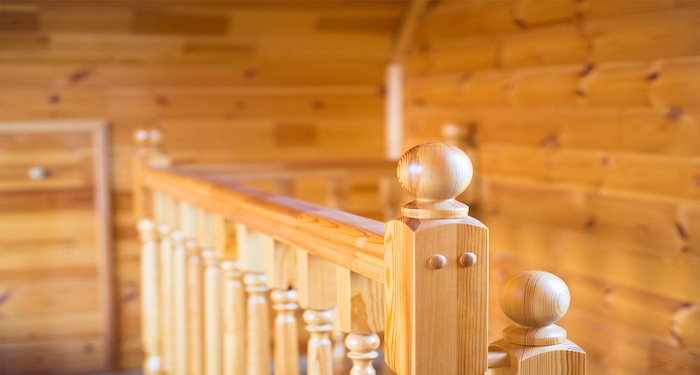
Wooden bannisters, such as oak bannisters, are commonly found in homes and apartment buildings. Wood can be used for decks, garage stairways and grand stairways in old houses. However, wooden bannisters can be combined with modern materials such as metal or glass to create a distinct look.
Wood bannisters are commonly found in traditionally styled homes and buildings, particularly entryways. They are commonly used indoors, but if properly treated, you can also use them outside on decks and other exterior structures.
To create a more modern staircase, wood bannisters can be made of metal. An oak bannister replacement is usually quite a simple job to complete.
Pros
- Natural beauty
- It can be painted in any colour
- Easy to maintain
Cons
- It can be seen as outdated
Glass Bannister
While glass may appear to be a dangerous material in staircase design, it is much more substantial than it appears. Glass is available in various finishes, including clear, semi-transparent, pigmented, frosted, and etched.
Typically, glass is not used for stair bannisters. Handrails with glass railings are typically made of other materials, such as wood or metal.
You can find glass bannisters in both interiors and exteriors of modern commercial houses and buildings. The stair railing glass panels can be fully or partially structured with stainless steel or aluminium, or they can be frameless.
Pros
- Provide safety without obstructing a view
- Let in natural light
- Easy to clean
Cons
- Must be cleaned regularly
- It is heavy and can crack during installation if not handled properly
How Much Does It Cost to Remove a Bannister?
When removing a bannister, consider several costs, including your materials or any tools you may require. Your local DIY shop will be your best option for calculating the cost, which your style preference and requirements will determine.
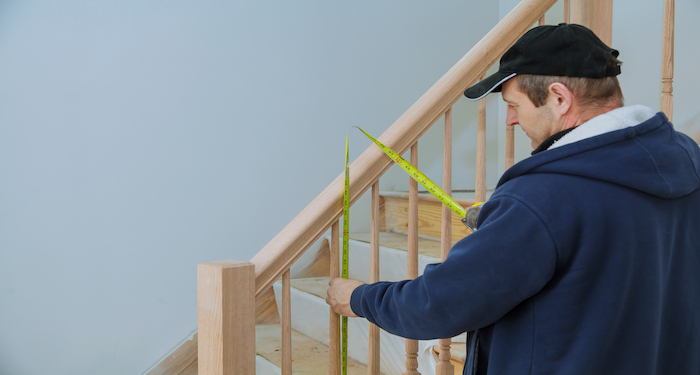
A bannister removal typically costs between £100 and £150; however, heavier bannisters or bannisters in more challenging locations may cost between £200 and £300. Depending on how easy the removal is, it will take 3 to 4 hours.
FAQs
Q: Can you paint a bannister?
A: Because they are a relatively flat surface, bannisters are relatively simple to paint. Because handrails are such a high-traffic area, a hard enamel-type paint in such a satin or semi-gloss finish is recommended. Flat or matte paints are more likely to blemish and are more difficult to clean.
A: Apply a specialist wood primer and an undercoat of Dulux Speed Undercoat on all bare wood surfaces and exposed filler. When your primer is completely dry, you can begin painting. Begin at the top of the stairwell and work down, making sure to start your brush into the wood's grain.
To get some inspiration, look up some bannister ideas online for some examples of how you can paint a bannister to suit your home.
Q: Is it illegal not to have a bannister in the UK?
A: Stairs must have a bannister on at least one side, whether they are less than one metre wide, and on both sides, if they are wider. The bottom two steps of stairs do not require a handrail.
Q: Is it hard to install a bannister?
A: Although installation appears simple (the bannister railing only needs to be 34 to 38 inches just above the noise of the stairway treads) it could be more complicated than you think. The brackets that hold the handrail in place must be attached to studs or sturdy posts that do not always line up with the nose of the treads.
Q: How do you remove a bannister?
A: Drill the bracket that holds the bannister to the wall, and then unscrew the bannister from the newel post and posts. You must remove the bannister at this point. Make a note of it and set it aside for later use.
Q: How do I measure a bannister?
A: To get an idea of how many handrails you'll need, multiply the number of steps on your stairwell by 13". Don't forget to account for any additional length required at the top or bottom of your stairway.

